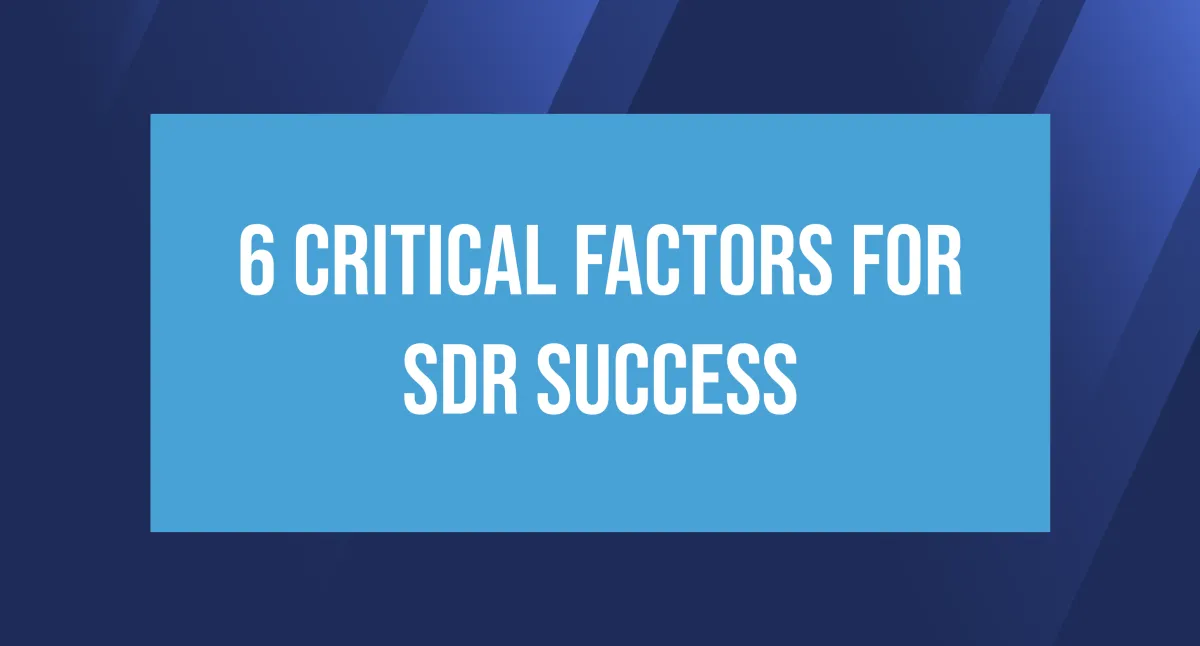
6 Critical Factors for SDR Success
After onboarding and coaching hundreds of SDRs inside our SDR Accelerator for MSPs, we started to notice some unmistakable patterns.
Some SDRs would consistently book meetings, generate momentum, and create real sales pipeline.
Others would flounder.
At first glance, it might’ve looked like they were operating under similar conditions—same industry, similar services and territories—but once we looked closer, the differences were clear. The list quality, the messaging, the onboarding—all of it varied far more than it seemed on the surface.
So what gives?
A couple months ago, we took a deep dive into our top-performing reps to figure out what actually drives success.
We found 7 things.
6 core levers that drive outcomes. And 1 amplifier that turns a good system into a great one.
This isn’t theory. This is pattern recognition after training and managing real reps with real call numbers and real accountability.
Let’s break it down:
1. The List
Quality in = quality out. Some SDRs were calling on raw, outdated data scraped from who-knows-where. Others were working with segmented, validated, vertical-specific lists. Big difference. You can’t call your way into good results if the data is garbage.
2. The Offer
Whatever your SDR is pitching—a 15-minute meeting, a free assessment, a piece of training—it's an offer. And the cost isn't money. It's time. The more relevant, tangible, and low-friction the offer is, the more likely it is to land. Great SDRs know how to position value in a way that earns attention.
3. The Script
A script isn't just a set of words. It's a strategy. We've seen hundreds of variations. The best ones sound natural, invite dialogue, and create a sense of relevance in the first 10 seconds. Templated or robotic messaging tanks performance. Always.
4. The Talent
Not all SDRs are created equal. A decent SDR and a great SDR aren't 10% apart. They’re 10x apart. And while the SDR seat is often an entry-level role, that doesn't mean anyone can do it well. Screening for the right core competencies and communication skills matters more than people think.
5. The Training Plan
This is one of the biggest levers. The reps who got 1 day of onboarding and then thrown to the wolves? They struggled. The reps who had 30-day onboarding plans, roleplaying, and market context? They hit quota faster. Training doesn’t guarantee success, but the lack of it almost guarantees failure.
6. The Coaching Rhythm
Weekly coaching. Call reviews. Script feedback. Real-time adjustments. This is where average reps become top performers. Coaching isn’t a one-time event. It’s an ongoing system of support, iteration, and accountability.
7. The Amplifier: Marketing
You can absolutely get results with just the first 6. But when marketing and SDRs are working in tandem—aligned messaging, shared assets, brand reinforcement—everything gets easier. Cold calls turn warmer. Prospects show up to meetings with context. Close rates improve. It all works better together.
The Takeaway
If your SDR performance is inconsistent, don’t just look at the rep. Look at the system.
Because great performance is rarely just about effort. It's about environment.
And this doesn’t just apply to SDRs. The same principle holds for any sales role—and frankly, anyone joining your team. Talent matters. But talent without the right support structure? That’s a recipe for churn and underperformance.
Want your SDRs to win? Give them the conditions where winning is actually possible.
Hope this helps,
Ray
